
What do we know about Heracleion?
Heracleion, also known as Thonis, was an ancient Egyptian city located near the Canopic Mouth of the Nile River. It is believed to have been founded around the 8th century BCE and was an important port city for trade and religious rituals.
The city was dedicated to the god of Heracles, who was worshipped in the form of a statue that was said to be over 30 feet tall. Heracleion was also known for its many temples, including one dedicated to the god Amun and another to the goddess Isis.
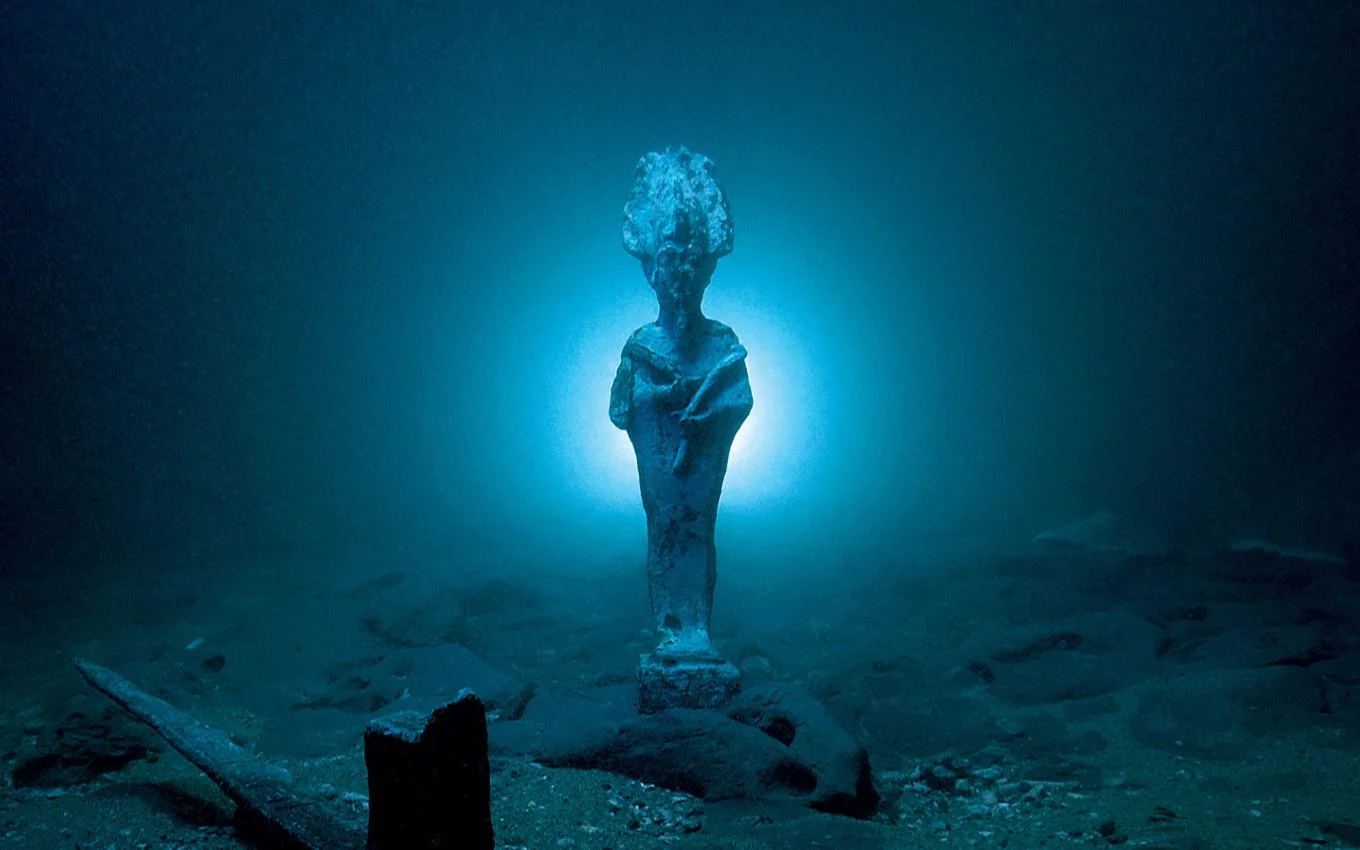
In addition to its religious significance, Heracleion was also an important commercial centre. It was a hub for trade between Egypt and the Mediterranean world and was known for its wealth and prosperity.
Heracleion was lost to history for centuries, until its discovery in 2000 by Franck Goddio and his team. Excavations have revealed a wealth of artifacts, including statues, inscriptions, and shipwrecks. The city is believed to have been submerged by rising sea levels around the 2nd century AD.
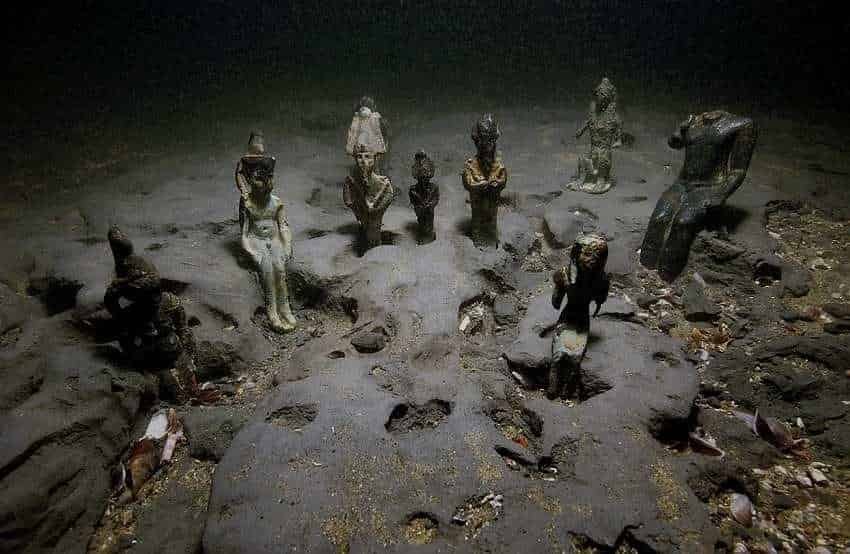
Despite being submerged for centuries, the city of Heracleion remains an important site for understanding ancient Egyptian culture and history. It provides valuable insight into the religious practices, trade, and daily life of the ancient Egyptians.
The History of Heracleion:
Heracleion and Cleopatra are connected through the city’s role as an important port city in ancient Egypt. Cleopatra, the last pharaoh of Ancient Egypt, was known to have visited Heracleion and used its port for her own purposes.

Cleopatra was known to have used Heracleion as a base for her naval fleet during her battles against Julius Caesar and later, Mark Antony. The city was also an important centre for the worship of the god Amun, and Cleopatra was known to have built a temple dedicated to the god in Heracleion.
The city of Heracleion was also known for its wealth and prosperity, and Cleopatra would have likely used this to her advantage as well. The city was a hub for trade between Egypt and the Mediterranean world, and Cleopatra would have had access to a wide range of goods and resources through the port.

Despite Heracleion’s significance in the history of Cleopatra, the city was lost to history for centuries. It was not rediscovered until 2000 by Franck Goddio and his team, who uncovered a wealth of artifacts and relics from the city’s past.
Today, Heracleion is an important site for understanding ancient Egyptian culture and history, and its connection to Cleopatra adds an additional layer of interest and significance to the site. The artifacts and inscriptions discovered at the site provide valuable insight into the ancient Egyptians’ religious practices, trade, and daily life, as well as the political and military activities of the last pharaoh of Egypt, Cleopatra.

The significance of Heracleion:
Heracleion is Significant for several reasons:
- Religious significance: Heracleion was an important religious centre dedicated to the God Hercules and also featured temples dedicated to Ammu and Isis. The discovery of the city has provided valuable insight into ancient Egyptian religious practices and beliefs.
- Trade: Heracleion was an important port city that served as a hub for trade between Egypt and the Mediterranean world. The discovery of the city has provided valuable insight into City Egyptian trade and commerce.
- History: Heracleion is an important site in the history of ancient Egypt and its discovery has provided valuable insight into the daily life, culture and politics of the ancient Egyptians.
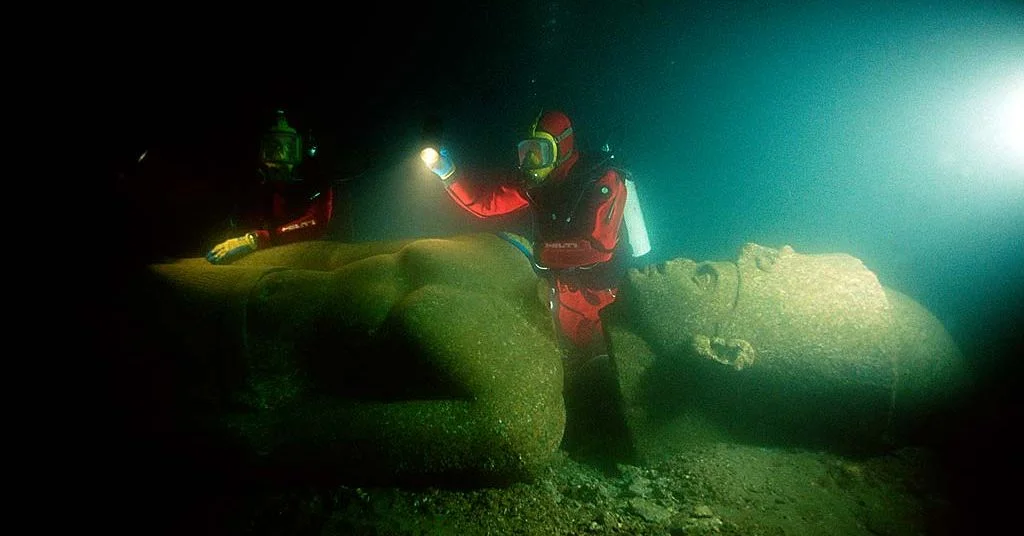
- Cleopatra: the city of Heracleion was known to have been used by Cleopatra as a base for her naval fleet during a battle against Julius Caesar and later Mark Antony. This connection to Cleopatra added an additional layer of interest and significance to the site.
- Archaeological importance: Heracleion was submerged for centuries, and it is discovery has provided a wealth of facts and relics from the city’s past. The city is an important archaeological site that provides valuable inside into the ancient world.
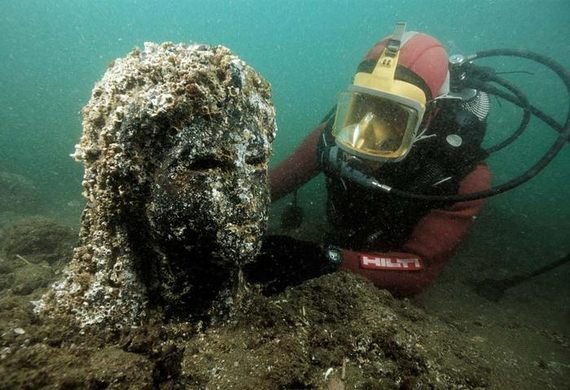
- Scientific significance: the discovery of the city has provided scientists with the ability to understand the process of submergence and how it affects the preservation of cultural Heritage it also held to understand the impact of sea level rise and human activities on the coastal zone.
Overall, Heracleion is an important site for understanding ancient Egyptian culture and history and its discovery has provided valuable Egyptians with the religious practice, trade and daily life of the ancient Egyptians.
What life was like in Heracleion?
Life in Heracleion would have been quite different from life in other ancient Egyptian cities. As an important port city, it would have been a melting pot of cultures and customs from various parts of the Mediterranean world.
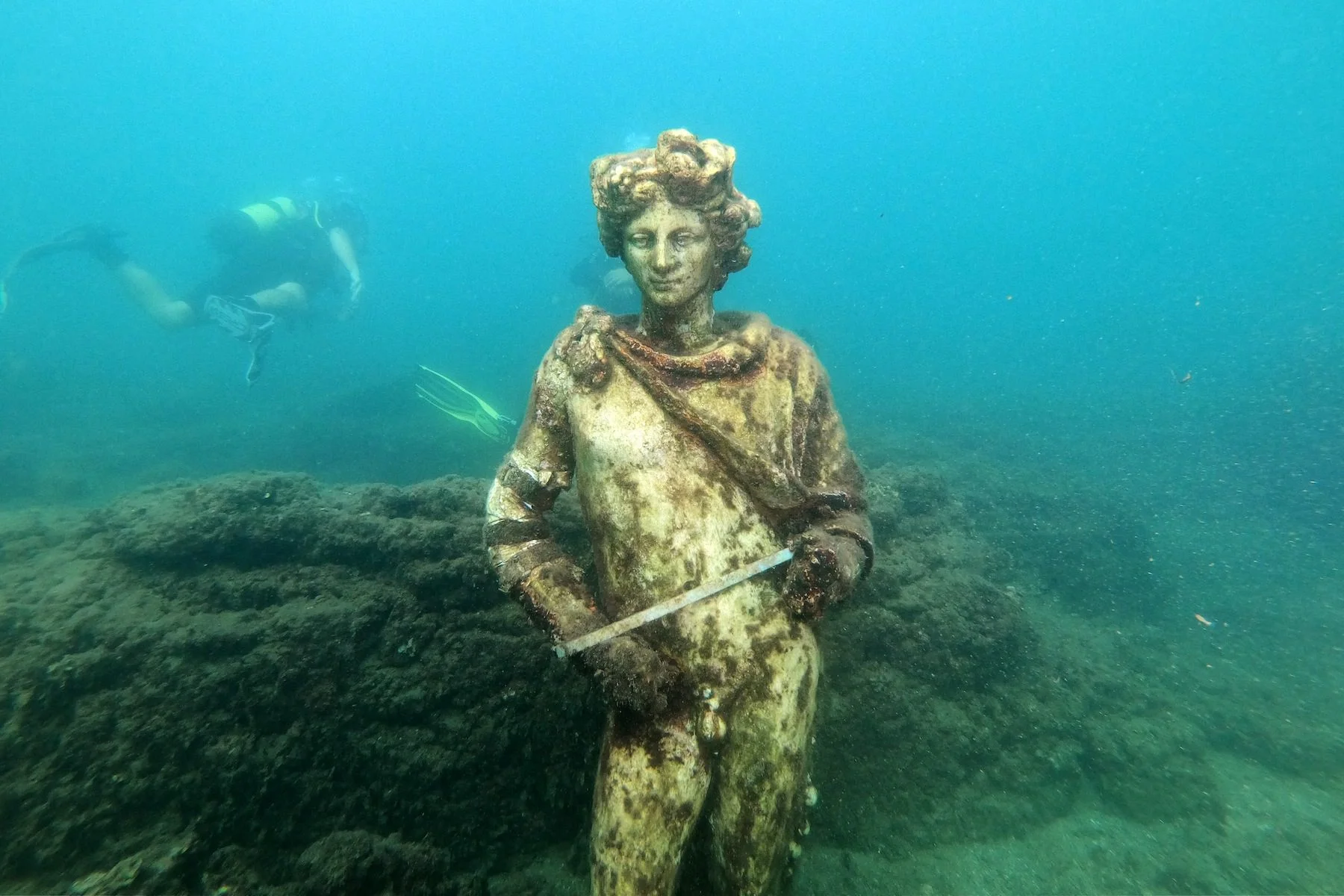
Religion would have played a significant role in daily life in Heracleion. The city was dedicated to the god Heracles, and there were many temples, shrines, and statues dedicated to him. Worshippers would have made offerings to the god and participated in religious rituals.
Trade and commerce would have been an important part of daily life in Heracleion. The city was a hub for trade between Egypt and the Mediterranean world, and merchants, traders, and sailors would have been a common sight in the city.
Heracleion would have been a wealthy and prosperous city, as evidenced by the many luxurious artifacts that have been discovered there, such as gold and silver jewelry and fine pottery. The city’s inhabitants would have had access to a wide range of goods and resources.
The city was also a centre for learning and culture. It had libraries, schools, and cultural institutions that would have offered opportunities for education and intellectual development.
Heracleion would have been a bustling city, with a diverse population and a rich cultural heritage. Its inhabitants would have been exposed to the customs and cultures of the many different peoples who passed through the city, making it a unique and fascinating place to live.
However, as the city was submerged by rising sea levels around the 2nd century AD, it is difficult to know exactly what life was like in Heracleion during its prime time. Nonetheless, the excavations and discoveries made by Franck Goddio and his team, have helped to paint a picture of what life might have been like in this ancient Egyptian city.
The city’s inhabitants Heracleion:
The city of Heracleion was home to a diverse population, made up of people from different regions and backgrounds. As an important port city, it would have been a melting pot of cultures and customs from various parts of the Mediterranean world.
The inhabitants of Heracleion would have included merchants, traders, and sailors who were involved in the city’s trade and commerce. They would have been responsible for importing and exporting goods and resources and would have been a common sight in the city.
Heracleion was also home to artisans, craftsmen, and other skilled workers. They would have been responsible for creating the many luxurious artifacts that have been discovered in the city, such as gold and silver jewellery and fine pottery.
The city’s inhabitants would also have included priests, scribes, and other educated individuals who were involved in the city’s religious and cultural institutions. They would have been responsible for maintaining the city’s temples and shrines and would have been involved in religious rituals.
The city would also have had a large population of farmers, herders, and other rural inhabitants who lived in the surrounding area and supplied the city with food and other resources.
Overall, the inhabitants of Heracleion would have been a diverse group of people from different backgrounds, united by their common goal of making a living and contributing to the city’s prosperity and cultural heritage.
The city’s demise
The city of Heracleion is believed to have been submerged by rising sea levels around the 2nd century AD. The exact cause of the city’s demise is not entirely clear, but several factors may have contributed to it.
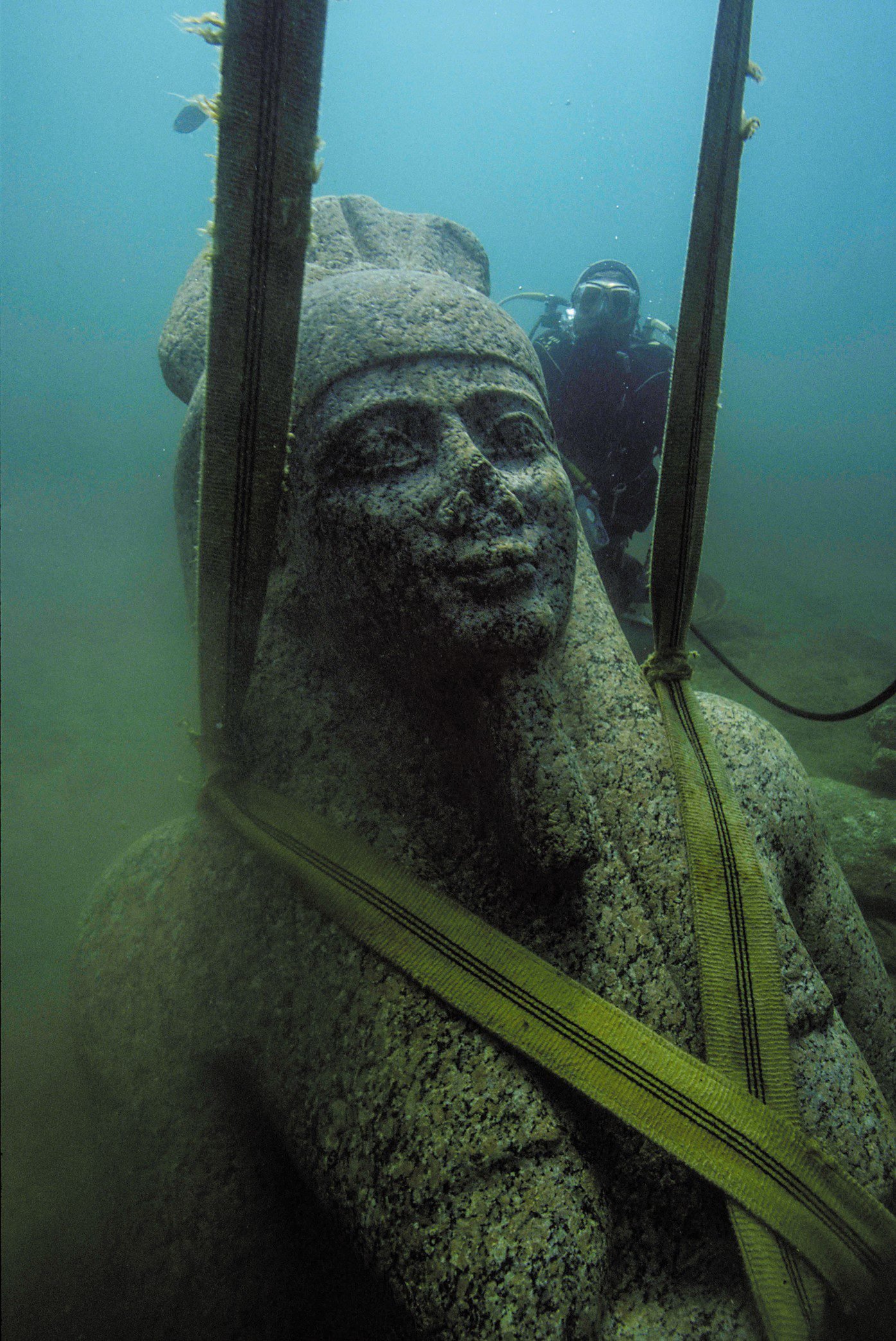
One theory is that the city was hit by a severe storm or tsunami, which caused massive flooding and erosion. This would have led to the gradual submergence of the city over time. Another theory is that the city was destroyed by an earthquake, which caused the ground to shift and the city to sink.
Another factor that is believed to have contributed to the city’s demise is human activity. The city’s inhabitants were known to have extracted clay, sand, and gravel from the surrounding area, which may have caused the land to become unstable and led to the city’s submergence.
Climate change and sea level rise are also believed to have played a role in the city’s demise. The city was built on low-lying land and would have been vulnerable to flooding and submergence as sea levels rose.
Overall, the city of Heracleion’s demise was likely caused by a combination of natural and human factors. The exact cause is still not entirely clear, but the discovery of the city by Franck Goddio and his team has provided valuable insights into the city’s past and the process of submergence.
The city’s rediscovery:
The city of Heracleion was lost to history for centuries and was not rediscovered until 2000 by Franck Goddio and his team. The discovery of the city was made by accident while searching for the French ship the “Mahdia” that was lost in 1901.
Goddio and his team were using advanced underwater technology such as side-scan sonar and underwater robots to search for the shipwreck. In the process, they discovered the remains of an ancient city that was believed to be Heracleion.
Excavations at the site revealed a wealth of artifacts and relics from the city’s past, including statues, inscriptions, and shipwrecks. The discovery of the city provided valuable insights into ancient Egyptian culture and history, and the process of submergence.
The rediscovery of Heracleion has been a major achievement in the field of underwater archaeology. It has provided valuable insights into ancient Egyptian culture and history and has highlighted the importance of protecting and preserving underwater cultural heritage.
The city’s rediscovery has also led to an increased interest in the site, and it has become an important tourist destination. Visitors can now witness the remains of the ancient city and learn about its history and significance. Overall, the rediscovery of Heracleion has been a major achievement in the field of archaeology and has provided valuable insights into ancient Egyptian culture and history. It has also highlighted the importance of protecting and preserving underwater cultural heritage and has made it a popular tourist destination.
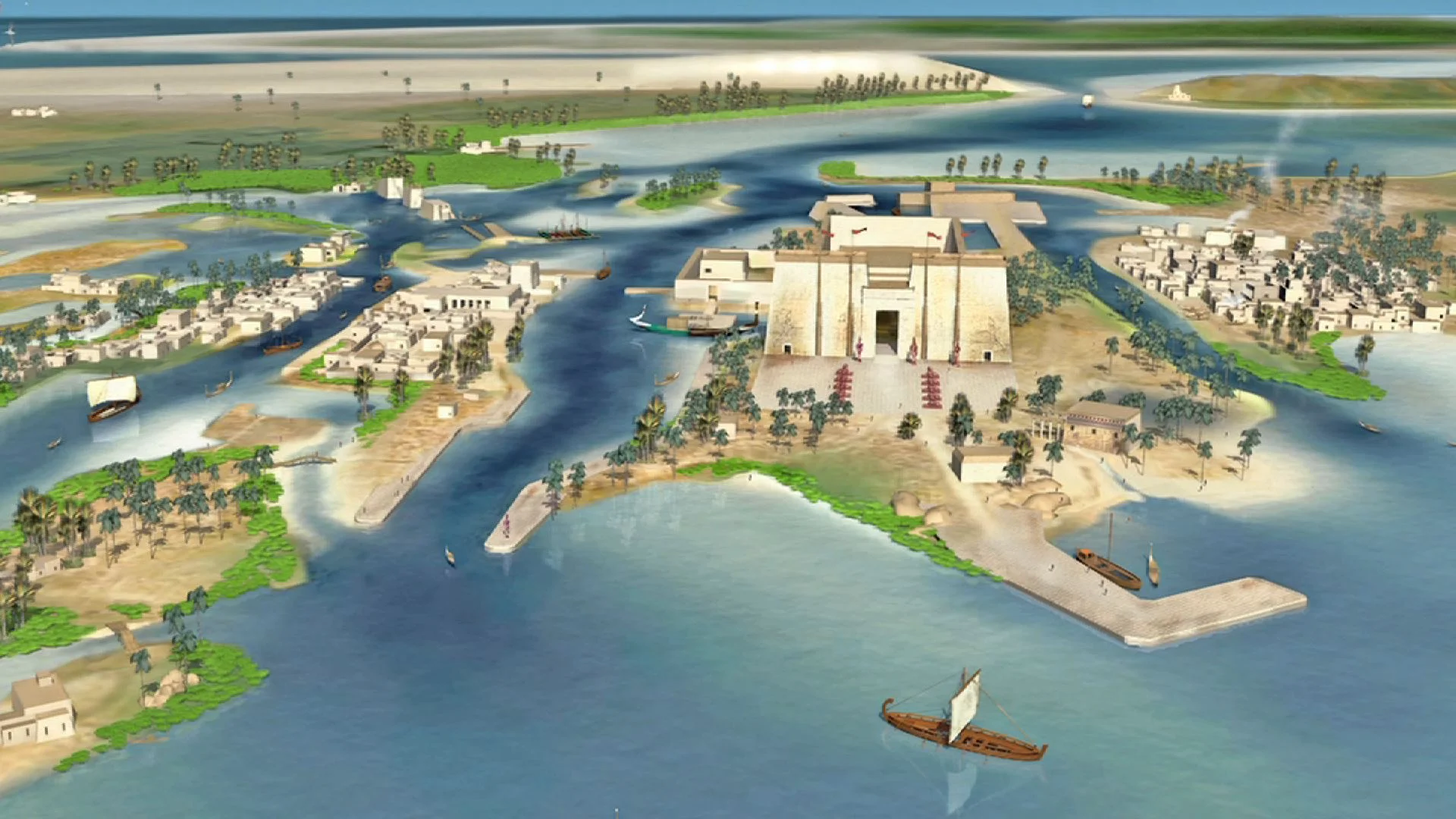
Conclusion:
In conclusion, Heracleion was an ancient Egyptian city that was once a major religious, commercial, and cultural centre. The city was dedicated to the god Heracles and had many temples, shrines, and statues dedicated to him. It was also a hub for trade between Egypt and the Mediterranean world and was known for its wealth and prosperity. The city was lost to history for centuries, until its rediscovery in 2000 by Franck Goddio and his team, which provided valuable insights into ancient Egyptian culture and history, and the process of submergence. The city’s rediscovery has also led to an increased interest in the site and it has become an important tourist destination. The city of Heracleion continues to provide valuable information about the past of ancient Egyptians, and its significance is undeniable.






.webp)










.webp)







